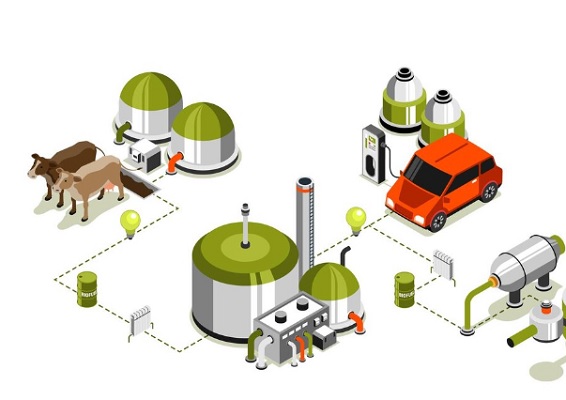According to the news report by Gasworld, Cincinnati-based Synthica Energy has secured approval from the Texas Commission on Environmental Quality for its air quality permit, paving the way for a groundbreaking anaerobic digestion (AD) facility in San Antonio.
Marketed as a “first-of-its-kind” project in the area, the facility aims to convert up to 250,000 tons of industrial organic waste into renewable natural gas (RNG), or biomethane, each year. Set to commence construction later this year, the plant will utilize AD, a method in which microorganisms break down organic materials in an oxygen-free environment to generate biogas and digestate. The resulting RNG, primarily methane, will be refined to meet natural gas specifications, positioning it as a clean, low-carbon energy source.
As per the news report, Grant Gibson, co-founder and chief development officer at Synthica, emphasized the necessity for such a facility in San Antonio, given the city’s robust food and beverage manufacturing sector. “San Antonio has a lot of food and beverage manufacturing here,” Gibson noted in an interview. “We’re not focused on composting like the City of San Antonio; rather, we complement that by dealing with industrial byproducts—commonly referred to as pre-consumer products.”
Synthica is actively collaborating with local manufacturers to secure contracts for managing specific organic waste streams, including byproducts from food and beverage production, damaged produce, spent yeast, and expired beverages. Notably, there are currently no AD facilities within a 50-mile radius of downtown San Antonio, despite the region’s industrial activity.
Gibson pointed out that the only existing RNG-producing facility nearby is the Tessman Road Landfill. He mentioned that while CPS Energy, the city’s electric utility, receives methane-based renewable energy from Covel Gardens and Nelson Gardens landfills, Synthica has been in discussions with CPS Energy about how the new facility could enhance the region’s renewable energy capacity.
AD facilities provide both environmental and financial advantages for manufacturers. By converting organic waste into renewable natural gas, companies can lower waste disposal costs while contributing to cleaner energy solutions. “We must upgrade it to meet the exact specifications of natural gas,” Gibson explained. “The benefit is that it contains only trace amounts of carbon.”
According to the U.S. Environmental Protection Agency (EPA), substituting fossil fuels like diesel and gasoline with biogas can significantly cut harmful emissions, thereby improving local air quality. Methane, the main component of biogas, has a global warming potential 28 times higher than that of carbon dioxide, making its capture and conversion essential for reducing greenhouse gas emissions, the news report further added.
While fewer than 1,500 AD facilities currently operate across the U.S., Synthica is targeting growth in areas such as San Antonio, Cincinnati, and Atlanta, where the demand for sustainable organic waste management is on the rise. The San Antonio plant has the potential to expand its capacity by an additional 125,000 tons in the future.
The company is also pursuing projects in Houston and Dallas. Its flagship facility in Cincinnati, which broke ground last summer, is set to begin operations soon.
As of 2023, the U.S. boasts over 2,200 biogas-producing sites, including 270 AD facilities at wastewater treatment plants and more than 660 landfill gas-to-energy projects. However, the potential remains significant, with the EPA estimating that the country could support nearly 13,500 biogas systems, capable of generating enough biogas to power 3 million homes or fuel 7.5 million vehicles annually.





